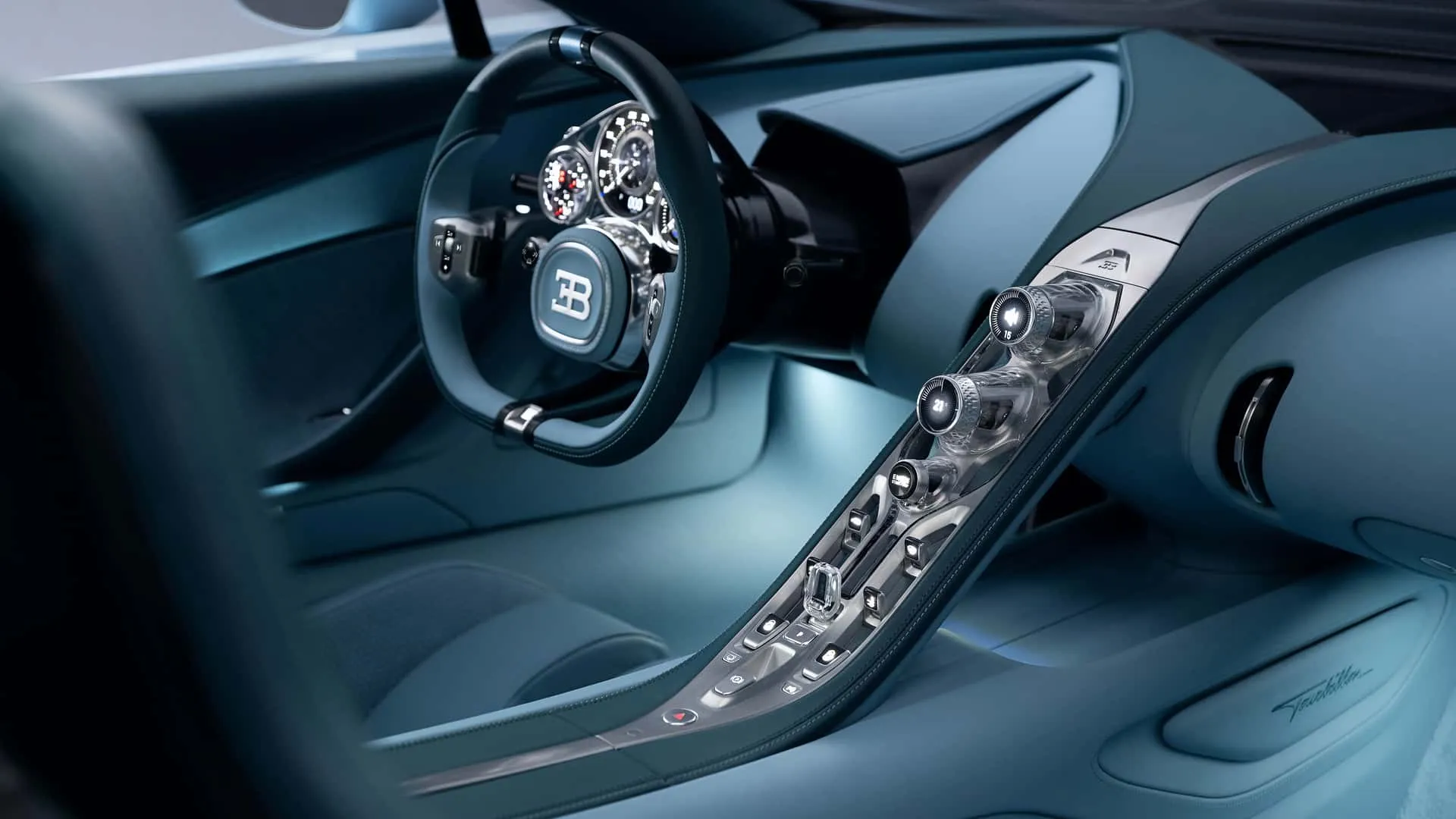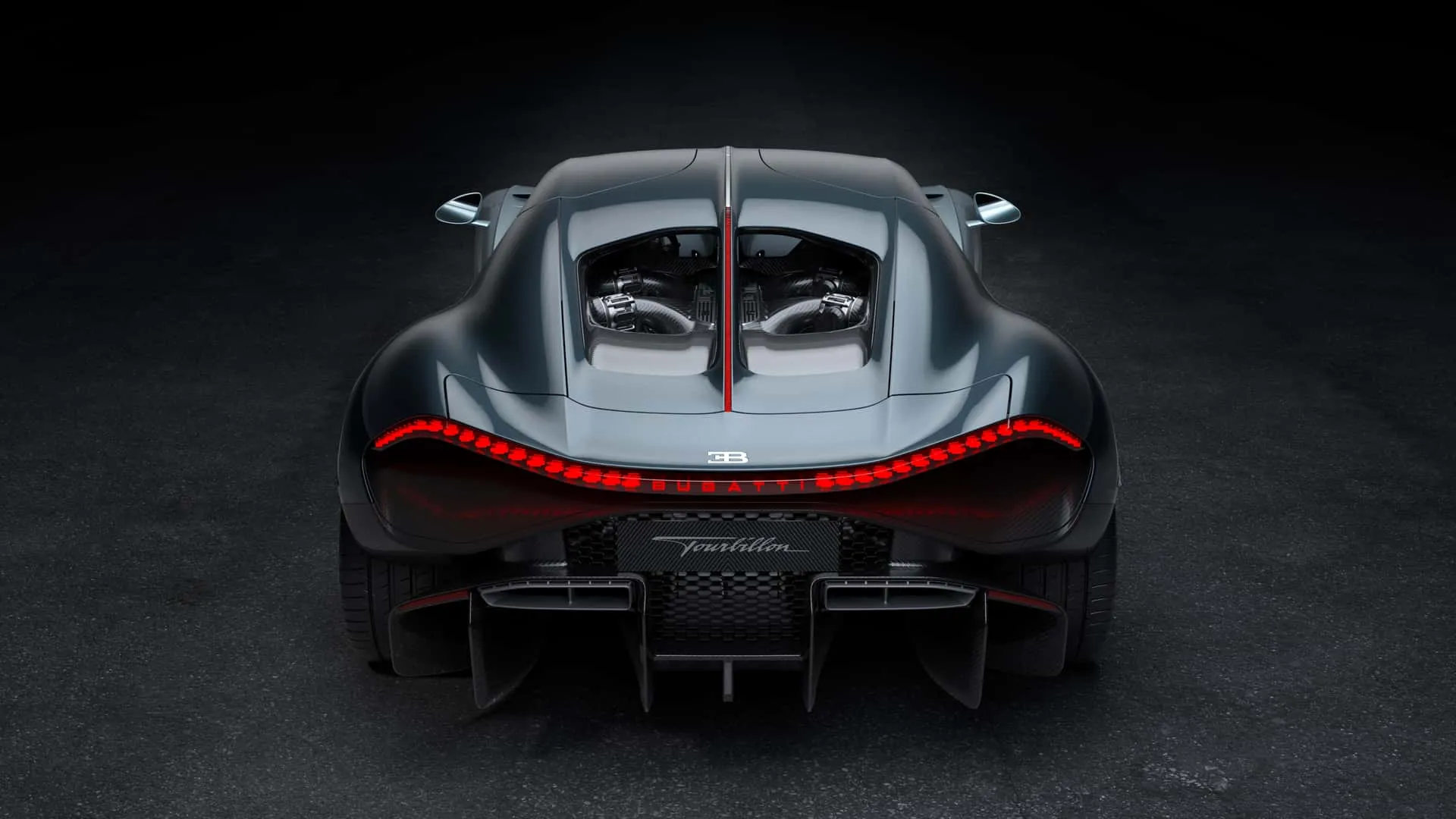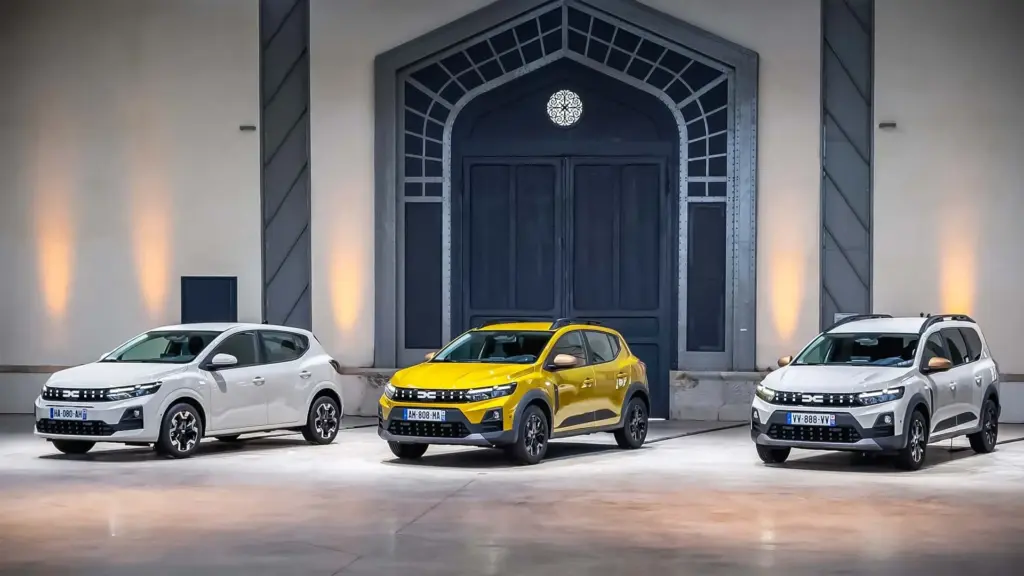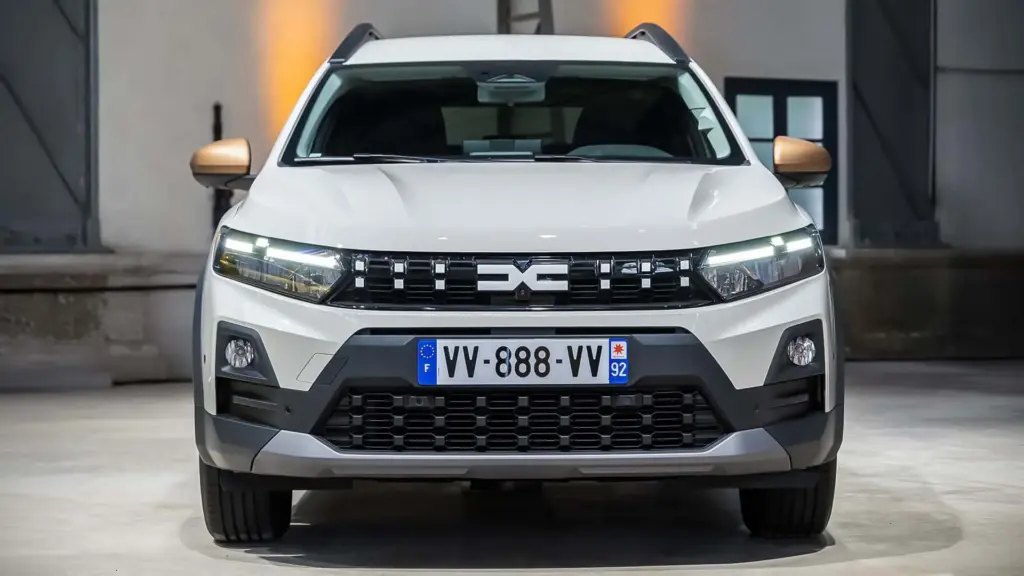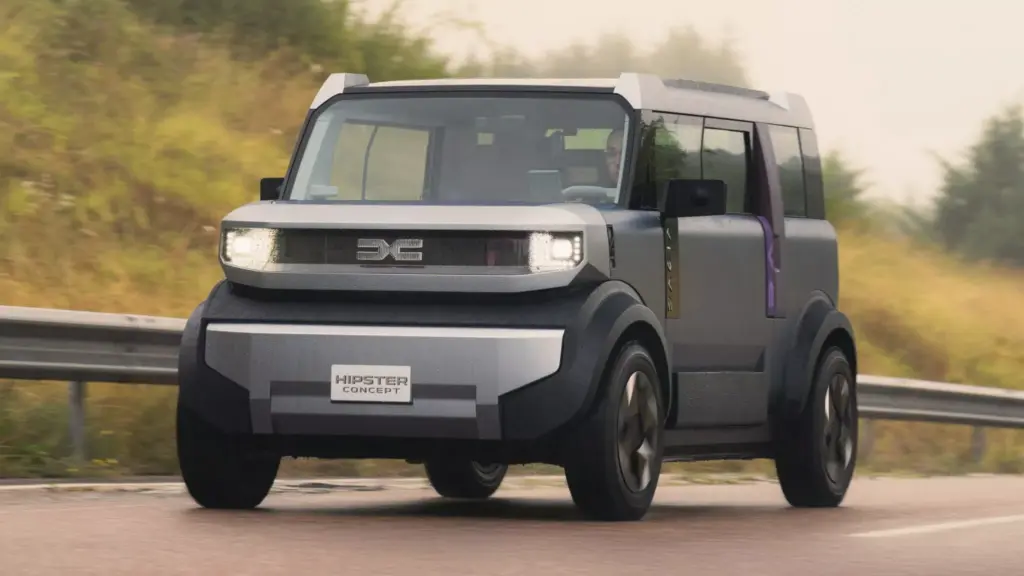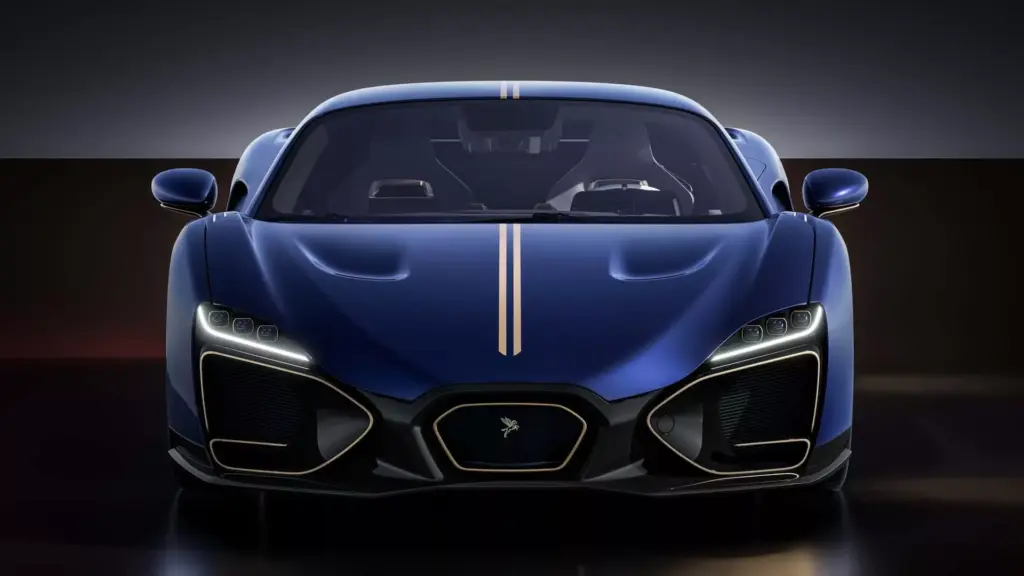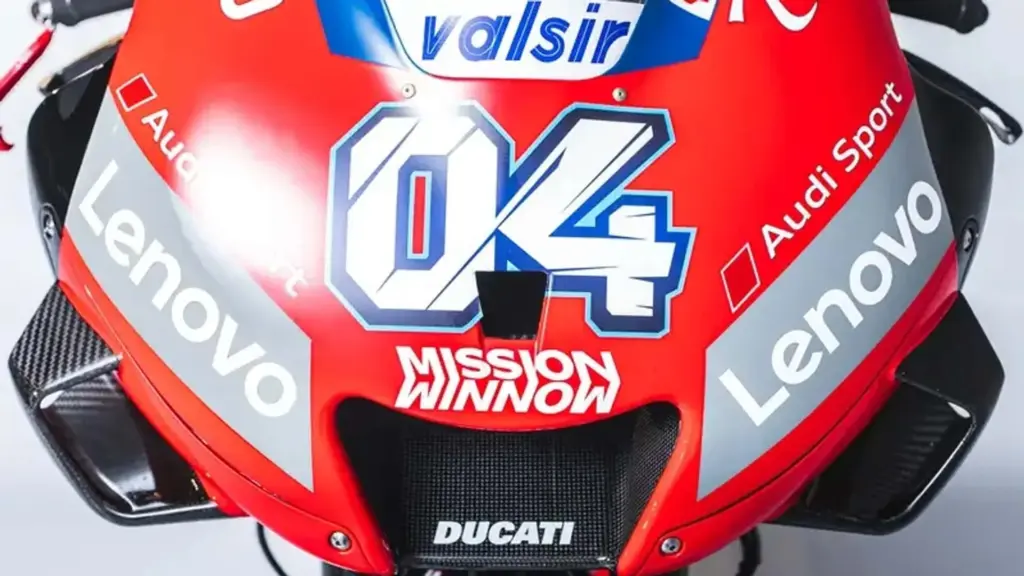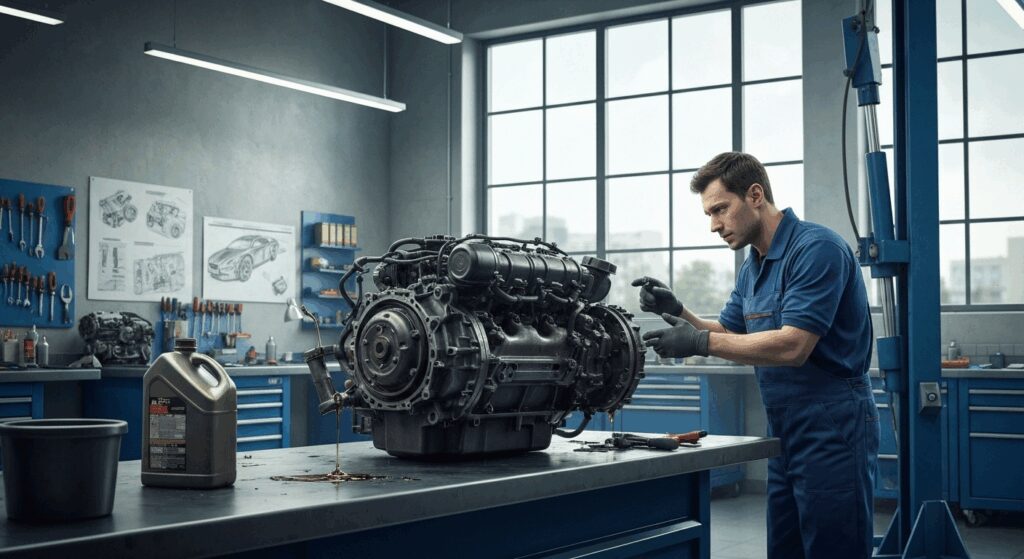The automotive world has just witnessed a seismic shift. While the Chiron was essentially seen as an evolution of the Veyron, the new Bugatti Tourbillon represents a radical break. Forget the iconic quad-turbo W16 engine; Bugatti boldly went in a completely new direction, and I must admit, it genuinely surprised and excited me. It’s a move that redefines what we expect from a modern hypercar and reminds me of the relentless pursuit of limits we see in machines like the McLaren 750S Le Mans, which also celebrates a lineage of pure performance.
Goodbye W16, Hello Naturally Aspirated V16: The Bugatti Revolution?
The big news is, without a doubt, the replacement of the legendary W16. In its place, Bugatti, with expert help from Cosworth, developed a naturally aspirated V16 engine. This 8.3-liter monster is an ode to classic engineering, but with a modern touch and an impressive weight reduction.
Weighing just 556 pounds, this new V16 is about 42% lighter than the heart of the Chiron. This rigorous diet was achieved largely by removing the four turbochargers that were the trademark of the W16 era. It’s fascinating to see how the pursuit of performance and efficiency leads to such unexpected paths, just as other luxury brands explore new configurations, like in the 2026 Bentley Bentayga Speed V8, even as an SUV.
A Turbo-Free Hybrid: Why This Bold Choice?
The decision to abandon turbos in a hybrid hypercar might seem counterintuitive, but Mate Rimac, CEO of Bugatti Rimac, has a clear perspective. According to him, it doesn’t make sense to use turbos in a hybrid supercar because the hybrid component makes up for any power loss, while also offering the benefits of electrification. It’s a logic that challenges conventional thinking and makes me reflect on how other brands are approaching hybridization in high-performance cars, as we’ve seen with the 2025 BMW M5, which also adopts a hybrid system.
Bugatti equipped the Tourbillon with a robust 24.8 kWh gross capacity battery. This battery allows for a purely electric range of about 43 miles, which is remarkable for a car of this caliber and adds unexpected versatility. I confess that, as an enthusiast, Mate Rimac’s statement about the lack of need for turbos in hybrids made me rethink, as I always saw the turbo as a performance ally, but electrification changes the game (Source: Top Gear).
Removing the turbos resulted in a loss of 600 HP from the combustion engine alone, but that’s where the hybrid magic kicks in. The Tourbillon’s three electric motors add a combined 800 HP. The V16 engine alone delivers 1,000 HP. Adding it all up, the Tourbillon reaches a total power of around 1,800 HP, surpassing its predecessors and positioning itself as a true monster of modern engineering, showing that electrification can indeed complement and even amplify performance.
Extreme Lightness: How Did the Tourbillon Shed Weight?
Beyond the significant weight reduction in the engine, Bugatti sought lightness in other crucial components of the Tourbillon. The new suspension, for example, contributed enormously to this goal. Thanks to extensive use of 3D printing and advanced materials, the suspension is 45% lighter than that of the Chiron. It’s a testament to the advancement of technology in cutting-edge automotive industry and reminds me of how innovation in materials can transform a vehicle, something we see in bold concepts like the BMW Concept Speedtop.
The final result of this obsession with lightness is a total weight under 4,398 pounds, including all fluids and with the fuel tank nearly full. For a hybrid hypercar with a huge V16 and three electric motors, this number is simply spectacular and demonstrates the level of engineering involved. Comparatively, the Chiron weighed about 4,400 pounds (dry weight), making the Tourbillon *lighter* even when “wet” and hybrid.
Heavyweight Competitors and the Future of the V16 Lineage
In the hybrid hypercar scene, the Bugatti Tourbillon joins a select club but with different approaches. While most high-performance hybrids tend to use turbo engines (which is almost ironic, given Rimac’s philosophy), the Tourbillon, like the Lamborghini Revuelto, bets on a naturally aspirated engine (a V12 in the case of the Lambo). Others, like the original LaFerrari, also used a naturally aspirated V12 with electrification, but the new Ferrari F80 already adopts a twin-turbo V6. Porsche, on the other hand, seems focused on a fully electric future for the 918 Spyder’s successor, as hinted by the Mission-X concept. It’s a diverse landscape that makes me wonder which direction high performance will really take.
The future of the Tourbillon and Bugatti under Rimac’s management looks promising and full of possibilities. Mate Rimac hasn’t ruled out the idea of a purely combustion V16 version, which would be a dream for many purists. He is also open to smaller hybrid configurations, perhaps even a version with just one electric motor to reduce weight further. Besides the coupe, a roadster is already almost confirmed, showing that plans for the Tourbillon family go far beyond the 250 planned coupe units.
Production of the Tourbillon will begin after 35 test prototypes are built, with the first deliveries expected next year. Meanwhile, Bugatti is focused on delivering the last examples of the W16 family, the exclusive Bolide and Mistral. It’s the end of an era and the beginning of another for this legendary brand, and I can’t wait to see how the Tourbillon performs in practice. High-performance electric machines, like the 2026 Dodge Charger Sedan, show the potential of electrification, but Bugatti seems to pursue a unique hybrid path.
Tourbillon in Key Numbers:
- Engine: Naturally Aspirated V16
- Displacement: 8.3 Liters
- Engine Weight: 556 lbs
- Electric Motors: 3 (800 HP combined)
- V16 Power: 1,000 HP
- Total Combined Power: Approx. 1,800 HP
- Total Weight (with fluids/fuel): Under 4,398 lbs
- Electric Range: 43 miles
- Production (Coupe): 250 units
Your Questions About the Bugatti Tourbillon Answered:
- Why did Bugatti abandon the quad-turbo W16? The brand sought a more radical and lightweight approach, opting for a naturally aspirated V16 coupled with a hybrid system to achieve superior performance and lower weight.
- How much power does the Bugatti Tourbillon have? The naturally aspirated V16 delivers 1,000 HP, and the three electric motors add 800 HP, resulting in a total combined power of about 1,800 HP.
- Is the Tourbillon lighter than the Chiron? Yes, it weighs less than 4,398 lbs with fluids and fuel, making it lighter than the dry weight of the Chiron (about 4,400 lbs), thanks to weight reduction in the engine and suspension.
- What’s the electric-only range? The 24.8 kWh battery allows the Tourbillon to travel about 43 miles using only the electric motors.
- Will there be versions beyond the coupe? Yes, a roadster version is nearly confirmed, and CEO Mate Rimac hasn’t ruled out purely combustion versions or smaller hybrid setups in the future.
To me, the Bugatti Tourbillon is a declaration of boldness and cutting-edge engineering. In a world heading towards full electrification, keeping a naturally aspirated V16 engine as the centerpiece—even if hybrid—is an act of bravery that honors the brand’s heritage. The weight reduction and smart integration of electric motors show that it’s possible to innovate without losing the soul. It’s a machine that not only impresses with its numbers but also with the philosophy behind it.
What do you think of Bugatti’s radical change? Leave your comment below and share your opinion about the new Tourbillon!
Author: Fabio Isidoro
Founder and editor-in-chief of Canal Carro, he dedicates himself to exploring the automotive universe with depth and passion. A car and technology enthusiast, he produces technical content and in-depth analyses of national and international vehicles, combining quality information with a critical eye for the public.



